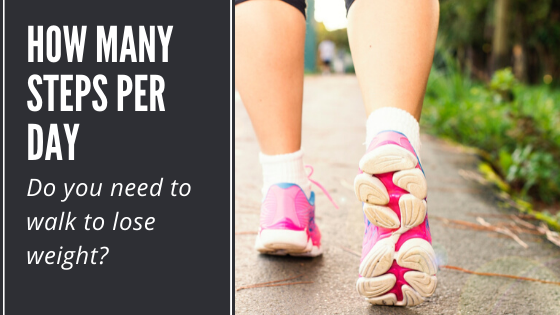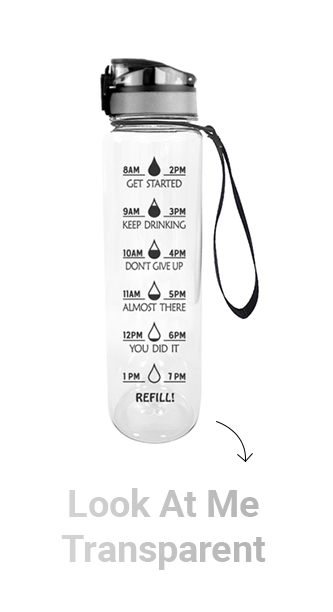Posted by Maximum Slim on May 9th 2023
How Many Steps?
Here's How Many Steps You ACTUALLY Need to Take Per Day to Lose Weight?
Walking is one of the best forms of exercise out there. After all, it’s easy to do and requires no specific gear. Simply grab a pair of socks and your favorite shoe, your pet (if applicable) and head out the door, for a stroll. It’s healthy! Walking can strengthen your muscles, improve sleep, and best of all it is good for your heart. It can improve circulation and lower your blood pressure, and walking is low-impact, so it is easy on your joints. Most individuals are capable of taking a few steps or a stroll around the block. But do you know how many steps a day you actually need to take to lose weight? Maybe, but maybe not. Why? Because that magic number you may be thinking of is (somewhat) arbitrary, and general for everyone.
Taking 10,000 (that arbitrary number) steps a day is a traditional goal in achieving fitness and lowering the risk of heart disease and stroke. However, studies have shown that at least 15,000 steps daily is optimal to shed a few pounds for weight loss. Reaching this goal improves metabolism significantly, preventing increased sugar levels and deposition of fat around the waist.
But, in order to lose a pound a week, you’ll need a 500 calorie deficit each day. That means, you need to burn or decrease your dietary intake by 500 calories, or some combination of the two. Most people can burn 300 to 400 calories a day simply by walking 10,000 steps. That means, you’ll only need to lower your caloric intake by 100 to 200 calories. But walking is an easy way to do this, since all 10,000 steps don’t have to be taken at one time.
Here's everything we know about how many steps you should actually take for weight loss—plus what you need to know about the amount that will help stave off chronic disease, how many calories walking actually burns and how many steps you should be aiming for daily in general.
How Many Steps Should You Take a Day?
The number of steps you should take each day varies from person to person and situation to situation. It is also contingent on a wide variety of factors, such as your age, gender and diet. However, it doesn’t take much to reap the benefits of walking.
There are some studies that have demonstrated that 4,400 steps a day significantly decreases your risk of getting chronic diseases such as obesity, heart disease, or stroke. But, if we increase our steps to 8,000 steps a day, it may result in a 51% reduction in certain chronic diseases. Now, while these numbers may seem overwhelming [to some], you can achieve this gradually. You can start with as little as 1000 steps a day, which you probably already do. Once you figure out how many steps you average daily, the rest is easy. With that number in mind, you can set a goal to add 500 or more steps weekly until the goal of 8,000 steps is met to help reduce chronic disease.
How Many Steps Should You Take to Lose Weight?
If you want to lose weight from walking, you’ll need to rev things up a bit. Many say: I will do 10,000 steps a day and the weight will fall off, but that could be incorrect. You shouldn’t stop there!
Reach for more steps. Researchers have found out that 15,000 steps a day is correlated with a lower risk of developing metabolic syndrome, a condition that manifests as increased blood pressure, elevated blood sugar and cholesterol levels, and excess body fat around the waist.
With that said, it is important you set realistic goals. Choose a number that works for you, your lifestyle, and both your physical and mental needs. Which will be easy once you figure out, how many steps do I average a day?
How Many Calories Does Walking Really Burn?
The amount of calories you burn while walking will vary, with weight and distance being the biggest factors. Did you know that most individuals burn an average of 100 calories per mile walking.
If you're walking for weight loss, you’ll want to get the most out of your routine. After all, each step you take is a step toward a better, more healthful you and life. But what can you do to maximize your walk—and your workout? If you make some slight changes. Changing the intensity of your workout and the duration will give you the most bang for your buck.
To start, instead of a 30 minute walk, let's turn it into an hour, especially on weekends, when we need to decompress from the week. Increasing the duration is an effective way to increase your calorie burn. You should also embrace interval training. This will be fun for people who are just starting out and/or those who haven't built much endurance to sustain a brisk pace for the entire workout. On a side note, longer walks tend to boost energy, boost immune function and strengthen your heart, making it a real win-win.
Another way to rev up your routine is to change your walking surface. It will also work different muscles and improve the overall quality of your walking workout. Taking the stairs or going up a hill, for example, will lengthen your stride.
You should also be consistent and persistent. Consistency, staying motivated and staying hydrated is the best way to improve the quality of steps. Not only does this boost endurance, but this also gives the added health benefits that come with a regular walk.
You will need to stay hydrated on your walk. Try our Motivational Water Bottle! Comes in 5 Different Colors.
Stay Cool Grey
Look at me Pink
Look at me Yellow
Look at me Purple
Look at me Transparent












